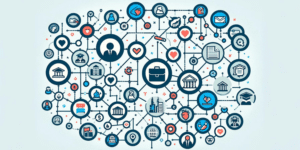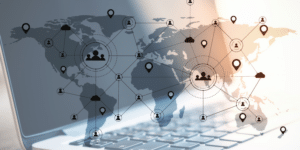Ecosystem Mapping and Tracking Can Teach You a LOT.
An ecosystem consists of all the organizations, individuals, programs, and other entities that interact and interconnect to affect the outcomes of your work. For example, the healthcare ecosystem includes organizations like hospitals, clinics, public health departments and non-profits, as well as individuals like doctors, patients, and those in their support networks. Ecosystem mapping and tracking is a technique for visualizing these interconnections over time to identify new ways to manage and improve the ecosystem.
How Does Ecosystem Mapping and Tracking Work in Practice?
We operationalize ecosystem mapping and tracking using our lens as network scientists. This allows us to apply social network analysis methods to measure the structure of connections (who is connected to who), quality (how much do they trust and value each connection), agreement (how much do entities share similar views) and attribution (what connections can be attributed to your ecosystem management and development work). These four areas of inquiry provide significant insight on how ecosystems can be leverage more effectively to advance social impact.
Learn More About Ecosystem Mapping and Tracking!
Want to learn more about ecosystem mapping and tracking, along with our network analysis methods? Visit our Learning Lab for webinars, events and our online course launching this spring. We also want to thank the CU Denver Center on Network Science for their support and co-sponsorship of these network leadership programs. We could not do it without them!
About the Presenter: Dr. Danielle Varda





